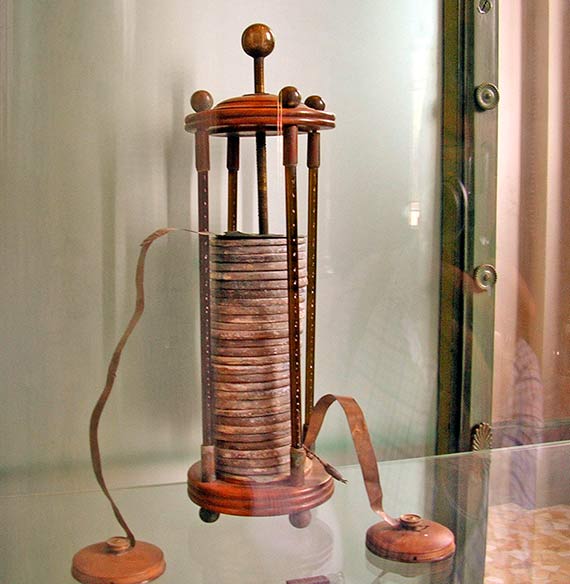Decorated by Napoleon Bonaparte for the invention of the electric battery, the Italian Alessandro Volta (February 18, 1745 – March 5, 1827) did not always have the support of the international community. The physicist showed that it was not the bodies of animals but rather the contact of two metals that produced an electric current, a then-revolutionary idea that overturned previous theories and provoked bitter controversy among scientists of the era.

The early years of his life also strayed outside the established canons. Born into an aristocratic family, his parents were alarmed because he did not start talking until age four, as recorded in the book Alessandro Volta (1999) by Umberto F. Molteni. But this delay did not seem to harm his later intellectual development considering that, in addition to his native Italian, he also learned Latin, French, German, English, Spanish, Dutch, Russian and Ancient Greek.
After focusing on humanistic studies in his education by Jesuits, Volta became interested in experimentation and, at the age of only eighteen, was corresponding with the French physicist Jean-Antoine Nollet on the subject of electrical attraction.
In 1775, when he was working at the Royal School in Como (Italy), he developed his first invention (or, more precisely, he improved, named and popularised an earlier version): the perpetual electrophore, a device that, by electrostatic induction, produced a continuous electric current and transferred electricity to other objects.

Also interested in chemistry, Volta discovered that the flammable air emanating from the marshes of Lake Maggiore was actually a gas, methane, which came from decomposing plant and animal matter. The finding led him to experiment with replacing the oil in lamps with methane and to create the Volta lamplighter.
He rejects animal electricity
During those years, the inventor also travelled through Europe and came into contact with renowned intellectuals of the time, such as Horace-Bénédict de Saussure and Voltaire. In 1778, he obtained the chair of experimental physics at the University of Pavia (Italy), where he would teach for almost thirty years.
At that time, another Italian scientist, Luigi Galvani, of the University of Bologna, was investigating what he called animal electricity. In an accidental discovery, he observed that the leg of a dead frog that was next to a static electricity machine twitched when it brushed against the tip of a knife.
Following this, Galvani conducted experiments with other animals and concluded that the contractions were produced by an electrical fluid from the organs of animals. Volta was amazed by the discovery, which he described as wonderful, but decided to investigate it for himself.

In doing so, he discovered that there really was no need for animals to produce the electric current. “All these experiments do not prove conclusively that animal electricity exists, since the organs remain passive, whereas metals are always active,” he said. What was needed to originate the electrical flow was the contact between two metals.
The discovery put the two scientists at odds with each other, along with their universities, and divided the international community. Eventually, it would come down on the side of Volta because of his most famous invention: the Voltaic Pile or electric battery. Designed in 1799, it was made of alternating copper and zinc conductive discs with a weakly acidic layer separating each pair of metals. The contact between the metals produced electricity in the form of sparks.
Napoleon Bonaparte, his great admirer
The battery became the first continuous source of electric current and was instrumental in the study of electromagnetism and the development of electrical equipment. In 1800, Volta wrote to Joseph Banks, president of the Royal Society of London (United Kingdom), explaining his invention.

Validated by the British institution, the battery quickly became known around the world and Napoleon Bonaparte asked the inventor for a demonstration at the National Institute of Sciences of France. Marvelling at the device, the emperor named him count and senator of the Kingdom of Lombardy. He was also elected to the National Institute of Sciences and decorated as Knight Commander of the Legion of Honour.
After overcoming a stroke, Volta died at his home in Como surrounded by his wife and two children on March 5, 1827 at the age of eighty-two. In his honour, the International Electrical Congress approved the volt as the unit of the electromotive force, and a lunar crater and an asteroid also bear his surname.
Comments on this publication